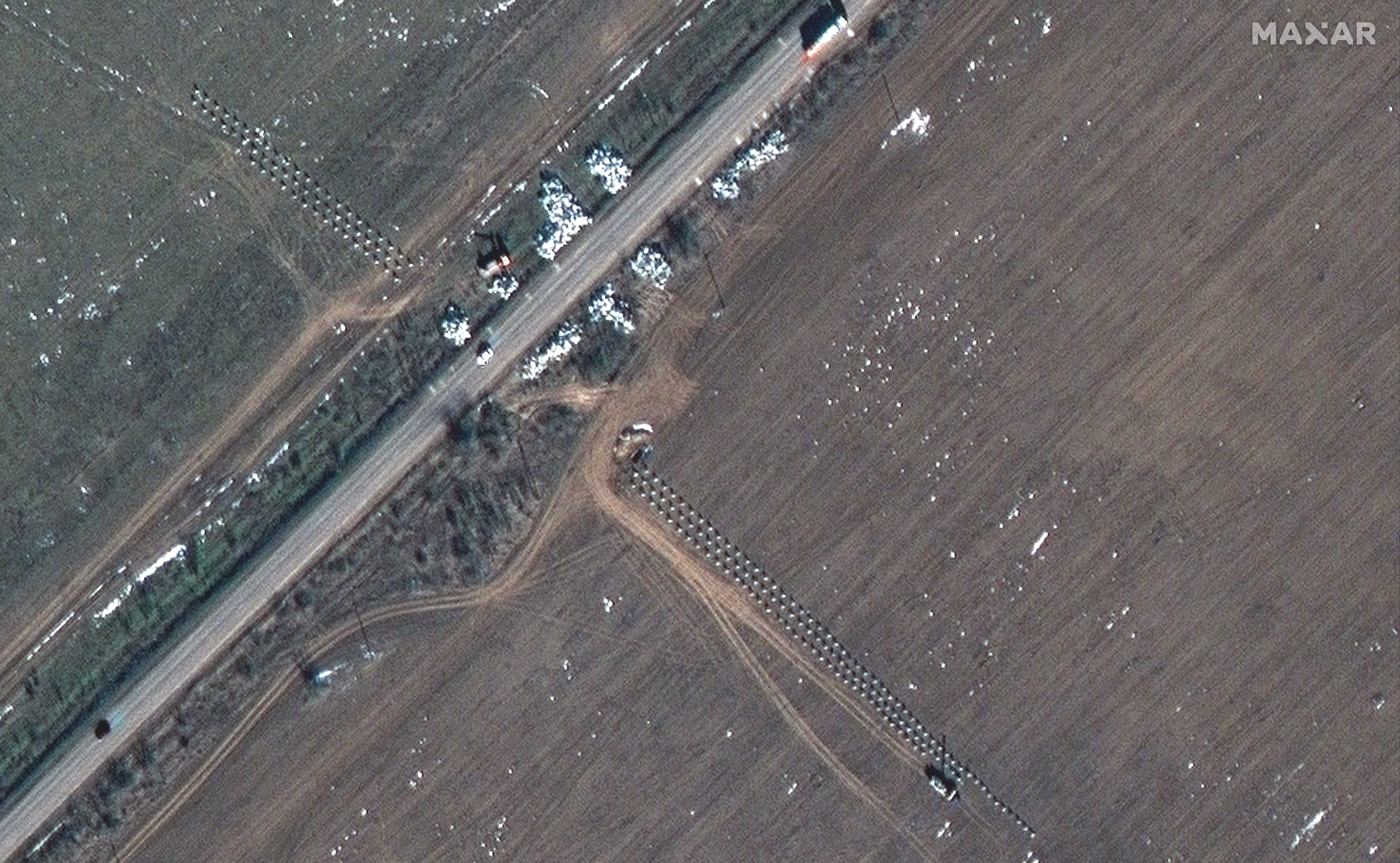What are the ‘dragon’s teeth’ defences being erected by Russia in Ukraine?
Concrete anti-tank barricades constructed in anticipation of major counteroffensive by Kyiv’s forces
Russian forces have been erecting “dragon’s teeth” defensive barricades in areas of Ukraine they control, in anticipation of an imminent counteroffensive by Kyiv, according to the latest satellite imagery of the warzone.
The defensive obstacles, pyramid-shaped concrete shards also nicknamed “devil’s teeth” for their resemblance to a fanged jawline, can be seen running between anti-tank ditches and troop-manned trenches from western Russia through eastern Ukraine towards Crimea, in aerial imagery recorded by Capella Space, Reuters reports.
The layered, zig-zagging lines are intended to make life as difficult as possible for any oncoming Ukrainian forces, as Russia seeks to protect the territory it has seized.
The digging work appears to have been carried out since Russian soldiers were driven out of Kherson in November, representing an attempt to secure its existing gains and bed down in a reversion to Soviet-era attrition tactics.
The images reveal that Russian positions are currently primarily concentrated in the southeastern Zaporizhzhia region, in the east and around the Crimean Peninsula, which Vladimir Putin‘s government annexed in 2014 – a move condemned as illegal by the international community – and which has provided his forces with a crucial strategic foothold from which to hammer Ukraine with long-range missiles throughout the conflict.
Towns of potential strategic importance like Polohy, Tokmak and Bilmak can also be seen surrounded by a network of defensive fortifications, which one expert has suggested might stretch as far as 75 miles (120km).
Ukraine’s pushback against Russia’s invasion has been long-forecast and the country has received a considerable amount of tanks, military vehicles and armaments from its Western allies in recent months.
Oleg Musiyenko, a military analyst based in the country, told Reuters he estimated Kyiv has as many as 110,000 soldiers to commit to an attack, including eight assault brigades comprising a total of 40,000 troops.
Regaining territory in the country’s south would be a major win for Ukraine that would allow it to once more control exports across the Black Sea, a key route for its grain shipments that Russia has threatened to shutter, and to restart the Zaporizhzhia nuclear power plant, which can meet one-fifth of Ukraine’s electricity needs but has stood idle since September.

However, in addition to Russia’s man-made barriers – and minefields, razor wire and camouflaged weapons nests – there is also the formidable Dnipro River. Ukraine’s forces are said to have recently started conducting raids across the river to dislodge Russian troops ahead of the expected offensive.
Russia’s “dragon’s teeth” defences, intended to stop such an advance, are part of its arsenal of intimidatingly-named tools of war (see also the “Satan II” hypersonic missile) but have been used around the world and actually date back at least to the Second World War, when they were extensively used by the German army along the Siegfried Line and Atlantic Wall and were known to the Nazis as “drachenzahne”.
Back in October, the Wagner Group of mercenaries were reported to be building similar barriers outside the occupied town of Hirske in the Luhansk Oblast, which Russian media obligingly christened the “Wagner Line”.
Their use has also been reported outside of the Ukrainian arena of war, with Poland announcing their construction in March as a means of fortifying its border with Belarus, led by Putin ally Alexander Lukashenko.



Join our commenting forum
Join thought-provoking conversations, follow other Independent readers and see their replies
Comments